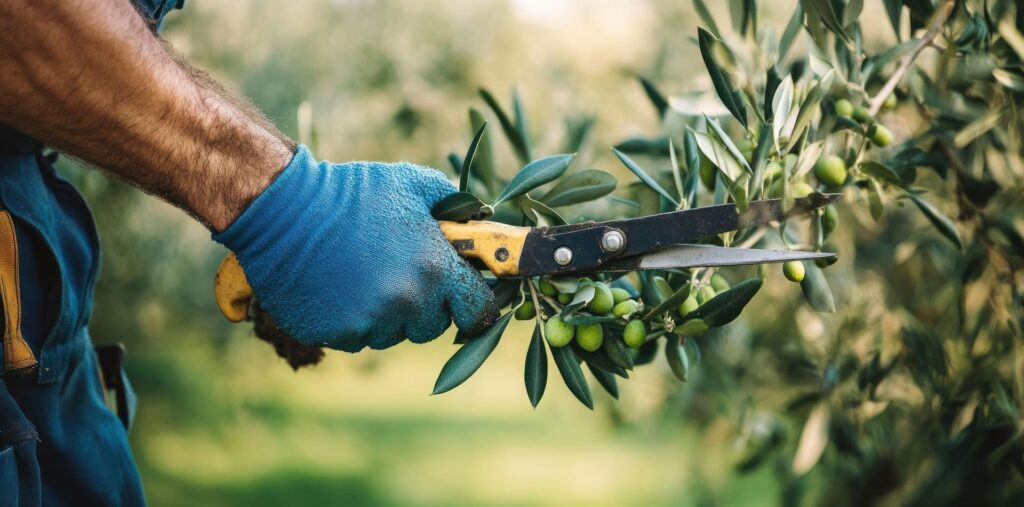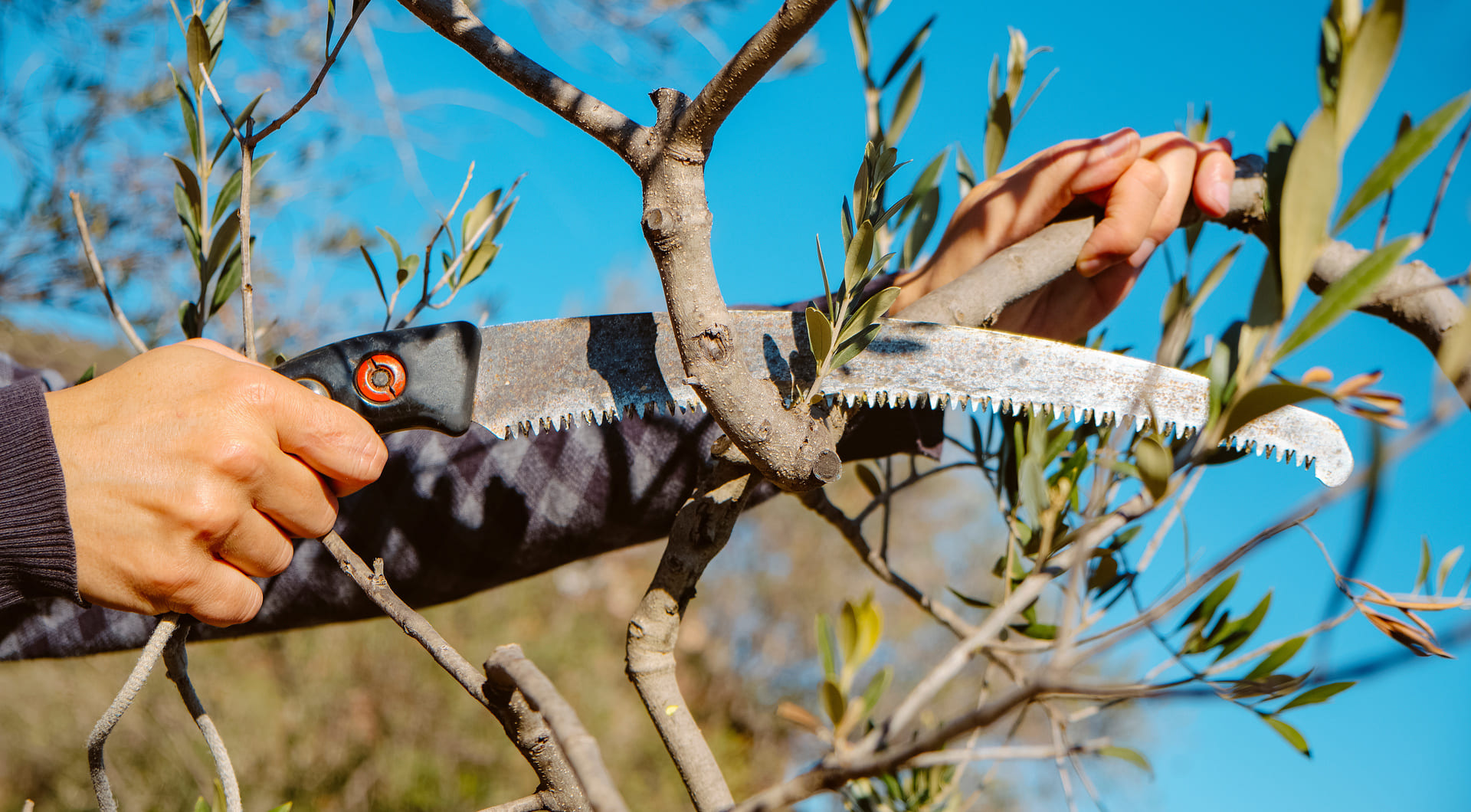Pruning olive trees is a crucial process in the agricultural calendar of any olive mill or olive oil producer. Below we will tell you when to prune an olive tree according to a series of particularities. Will you join us?
What does olive tree pruning consist of?
Although each olive grove has its particularities, there are specific periods that are more favorable to carry out this task, depending on factors such as climate, age of the tree and the state of production.
It is an essential practice in the care of these trees, whose importance goes far beyond aesthetics. Pruning not only keeps olive trees healthy, but also maximizes their production and ensures better quality olive oil.
Pruning olive trees involves the removal of dead, damaged or unnecessary branches in order to improve the structure of the tree and enhance its productivity. This process seeks to balance the canopy of the olive tree to allow greater sunlight penetration and better air circulation. It also helps prevent diseases and facilitates olive harvesting.
There are different types of pruning, such as training pruning, which shapes the tree in its early years; maintenance pruning, which is carried out on adult trees; and rejuvenation pruning, which is intended for old trees that have lost vigor.
Why do olive trees need to be pruned?
Pruning is essential to ensure the health and longevity of the olive tree, as well as to optimize its yield. Some of the main reasons for pruning are:
- Increase production: by eliminating unnecessary branches, the tree concentrates its energy on those parts that produce fruit.
- Encourage ventilation and light: a well-pruned tree allows sunlight to reach all branches, which improves photosynthesis and reduces the risk of pests and diseases.
- Prevent aging: regular pruning keeps the tree vigorous and prevents it from losing productivity over the years.
- Facilitate harvesting: an olive tree with a balanced structure simplifies access to the olives, especially when using mechanical tools.
What month is good for pruning olive trees?
The ideal time to prune olive trees depends on the climate of the region and the condition of the tree. In general, the most recommended period is late winter or early spring, before the budding of new leaves and flowers begins.
In warm climates, pruning can be done between January and March, while in colder areas it is better to wait until frost has passed, as freshly cut branches are more sensitive to cold. The important thing is to avoid pruning during flowering or fruiting, as this could negatively affect the crop.

Pruning according to the age of the olive tree
The age of the olive tree is a determining factor in the type of pruning to be performed. Young, adult and old olive trees require specific care to ensure their development and productivity. Below we will talk about how to prune a young and an old olive tree.
Pruning a young olive tree
Formative pruning is essential in the first years of an olive tree’s life, as it defines the structure that the tree will have in its adult stage. The main objective is to establish a strong trunk and a balanced crown that allows a good distribution of branches.
- First years (1-3): during this period, shoots growing close to the trunk are removed and 3 or 4 main branches that will form the structure of the tree are selected.
- Controlled growth: the tree is prevented from developing branches that are too long or too weak to break under the weight of the fruit.
This stage is key to lay the foundations for a productive and resistant olive tree.
Pruning an old olive tree
In the case of old olive trees, pruning focuses on rejuvenation and recovery of their productive capacity. These trees tend to develop very dense branches that hinder the entry of light and reduce the quality of the olives.
- Elimination of aged branches: the oldest and least productive branches are cut to stimulate the growth of new branches.
- Canopy thinning: the aim is to reduce the density of the canopy to allow better penetration of light and air.
- Gradual rejuvenation: in some cases, a more drastic pruning is carried out in stages so as not to weaken the tree too much.
An old but well cared for olive tree can remain productive for decades, even centuries, making it a valuable resource for olive oil production.
In short, olive pruning is an art that combines tradition and technique, and is fundamental to guarantee the quality and quantity of olive production. To appreciate the importance of this process and its impact on the quality of the oil, we invite you to visit our oil museum, where you can discover all the secrets of the olive grove. Knowing when and how to prune, as well as adapting the technique to the age of the tree, is essential to maintain a healthy and profitable olive grove.
At LA Almazara, we understand the importance of every detail in the care of the olive trees, from pruning to the production of our extra virgin olive oils. Our passion for quality drives us to offer exceptional products that reflect the effort and love for this practice, which you can find in our online olive oil store.
